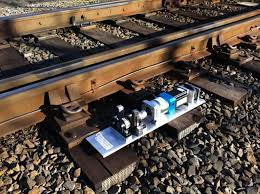The Railway Technologies Laboratory and the Virginia Tech Center for Vehicle Systems and Safety (CVeSS) are working to capture the energy generated by moving trains and convert it into useful electricity.

Generating Energy From The Moving Of Trains;
Seventy-six percent of the miles of train tracks in America are located in remote places without the electricity needed to run smart rail systems. These sophisticated devices include track health monitoring, wireless communications, and technology for roadside safety. Mehdi Ahmadian, director of CVeSS, says it can be difficult to get energy to that gear. Power generators that use propane need maintenance and refueling, while solar panels are vulnerable to damage or theft.
Researchers at CVeSS set out to develop a more robust system that would power these gadgets, discourage theft, and require less upkeep.
Motion research
After several years of design review, CVeSS researchers created a new kind of tie that replaces the conventional wooden variety and is equipped to generate power. Their high-tech tie, placed underneath the rail, is topped with a heavy metal bar mounted on a spring. As the wheels of the train pass over the rail, the train’s weight pushes down on that bar, triggering a series of gears. Those gears rotate a generator, creating electricity, which can then be stored in a battery.
After developing this viable idea, the team next created a prototype. The researchers successfully tested the device in the lab, and Ahmadian started conversations about the technology with familiar industry partners. Norfolk-Southern agreed to host the deployment of the new rail on a section of its track this past August. Since that rollout, the CVeSS team has been collecting data to determine the amount of power that can be generated and the best ways to optimize the device’s design.
A rail with a function
Researchers were able to determine how much power the rail may generate and how that power might be used as trains went over it.
We are capturing 15 to 20 watts of power for each train wheel that passes, according to Ahmadian. “If we have a lengthy train, it would have 800 wheels and generate 1.6 kilowatts, with maybe 200 railcars. Once we have that energy stored, we may use it to incorporate sensors into the tracks to give them greater intelligence.
The use of their energy harvesting system could result in a bigger extension of the crucial sensor networks that maintain the safety of railways.
Not because we lack the technology, but rather because the capacity to monitor the track with that equipment is largely absent.

